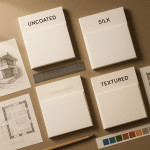Landscape designer new portfolio trends 2025: integrate drone imagery wisely
Recruiters now expect dynamic, data-rich visuals when they review a landscape designer's portfolio. The fastest route to that “wow” moment in 2025 is drone imagery—if you plan, shoot and publish it with strategy. This guide shows you how to weave aerial views into your showcase without slowing load times, breaking laws or confusing potential clients.
Why refresh your portfolio for 2025?
Landscape architecture software evolves yearly, but many online portfolios stay frozen for three to five years. In that gap, recruiter behaviour changes dramatically:
- Scroll speed: Eye-tracking studies show professionals skim a project page in under 12 seconds before deciding to stay or bounce.
- Mobile dominance: 68 % of portfolio visits now happen on phones, where vertical-first media like drone reels outperform static plans.
- Data validation: Funders increasingly judge pitches on measurable impact, not only aesthetics. Aerial footage of biodiversity corridors or storm-water systems communicates proof at a glance.
Shifting recruiter habits that impact landscape designers
Specialist platforms such as the new spatial-design portfolios hub sort search results by engagement rate. Portfolios with multimedia blocks—especially bird's-eye videos—generate up to 38 % longer on-page time, pushing them higher in ranking algorithms.
Drone imagery: the standout 2025 trend
The landscape designer new portfolio trends 2025 report highlights aerial media as the single asset most likely to trigger “save to shortlist”. Why?
What makes aerial overviews persuasive?
- Context. A drone shot reveals how your design sits in its wider ecosystem—roads, rivers, adjacent habitats—information ground photos hide.
- Scale. Recruiters instantly grasp the footprint of a plaza, park or green roof without reading dimensions.
- Process storytelling. Time-lapse flyovers can document phases from earth-works to planting, proving you manage complex timelines.
When drone shots backfire
- Legal traps: Flying over private property without permission can lead to take-down notices that tarnish your brand.
- Quality gaps: Pixelated or shaky footage suggests poor attention to detail. A single blurry frame can undo the credibility of a whole project.
- File bloat: 4K clips uploaded without compression swell page weight, hurting Core Web Vitals and search ranking.
Five-step workflow to integrate drone imagery wisely
- Pre-flight compliance. Check local UAV rules, apply for permits and log flight paths to protect wildlife zones.
- Shoot for narrative. Plan a storyboard: intro wide shot, mid-altitude details, finish with a people-scale walk-through. Keep clips under 45 seconds for recruiter attention span.
- Optimise in post. Export H.265 codec, cap bitrate at 10 Mbps, and crop to 1080 × 1920 vertical for mobile-first galleries.
- Layer data overlays. Use subtle animated call-outs (e.g., rainwater harvesting percentage) to add expertise without clutter.
- Host smart. Serve videos via adaptive streaming or low-size GIF previews with “play” icons to prevent auto-load drainage.
Optimising files for fast loading and SEO
Compression tactics that respect quality
Combine image sequence compression (WebP for stills) with lazy-loading attributes. A 15 MB drone clip can be reduced to 3 MB without visible loss using two-pass encoding.
Metadata and alt tags
Include the key phrase landscape designer new portfolio trends 2025 in alt text and filenames (central-park-stormwater-drone-landscape-designer-2025.webp) to capture image search traffic.
Case study: before vs. after adopting drone visuals
| Metric | Portfolio without drone imagery | Portfolio with drone imagery |
|---|---|---|
| Average session duration | 58 s | 1 min 37 s |
| Shortlist rate | 14 % | 29 % |
| Bounce rate | 46 % | 31 % |
| Mobile page speed (LCP) | 4.8 s | 2.9 s |
Take-away: When drone media is optimised, both user engagement and technical performance improve.
Additional 2025 upgrades beyond drones
- Integrate GIS overlays to map soil health and link to your proposal—see our guide on GIS and drone mapping for landscape proposals.
- Publish biodiversity metrics that matter to city councils—learn tactics in urban biodiversity metrics.
- Display transparent cost frameworks alongside visuals; the 2025 pricing guide for landscape designers explains the formats recruiters love.
- Fine-tune directory tags so aerial projects rank higher; shortcuts are detailed in optimising your landscape designer profile.
Portfolio readiness quiz
FAQ
- Do I need a pilot licence to fly drones for portfolio shoots?
- In most countries you must pass a basic UAV exam for commercial use. Check aviation authority websites and carry permit numbers on-site.
- What resolution should I aim for on portfolio images?
- Upload stills at 1920 px on the long edge, 72 dpi. Let the CMS generate responsive sizes to serve smaller versions on mobile.
- How many drone clips are too many?
- Three per project is a sweet spot: overview, focus detail, and process time-lapse. More can overwhelm viewers and slow pages.
- Can I reuse client drone footage in my public portfolio?
- Only if your contract grants self-promotion rights. Otherwise, request written permission or mask sensitive data.
Conclusion: turn altitude into advantage

Integrating drone imagery correctly positions you as a forward-thinking landscape designer who masters both artistry and technology. Follow the workflow above, keep files lean and contextual, and you'll ride the landscape designer new portfolio trends 2025 wave straight into more shortlists. Ready to elevate your showcase? Block a weekend, script your drone shoot, and let those aerial perspectives lift your conversion rate.
Next step: Audit one completed project today and plan its first 45-second flyover. Your future clients are already scrolling.











